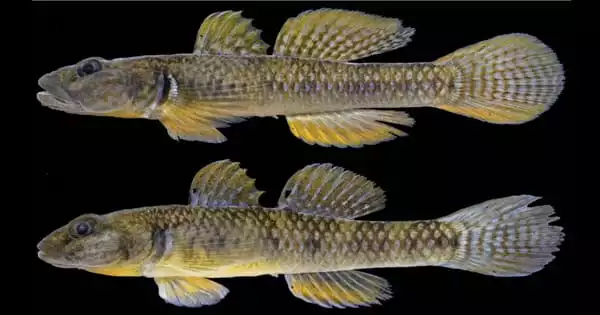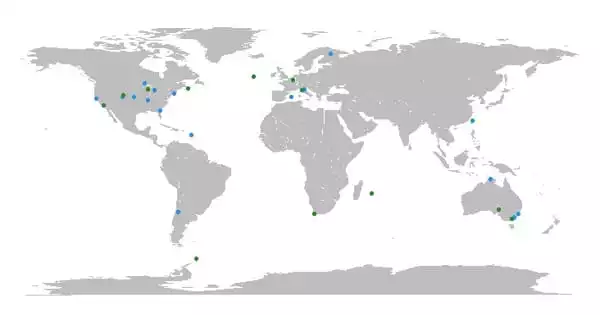Gobies are carnivorous, small in size, and distributed all throughout the planet. They are primarily marine in habit and are particularly plentiful in the tropics. The majority of species live on the seafloor and have a weak suction cup generated by the fusing of their pelvic fins.
Two new species of goby fish have been discovered by biologists in Palawan, a Philippine archipelago. Both goby fish belonged to the Rhinogobius genus. A group of scientists from Japan’s Okinawa Institute of Science and Technology Graduate University (OIST) and the Philippines’ Western Philippines University (WPU) discovered two new species of goby fish in Palawan, a Philippine archipelago. The goby fish, both of which belong to the genus Rhinogobius, were recently reported in the journal Zootaxa.
One of the species, Rhinogobius estrellae, was named after the waterfall, Estrella Falls, in Barangay Estrella Village, where the goby was discovered. The second species was called Rhinogobius tandikan, after the Palawan peacock-pheasant known locally as ‘Tandikan.’
We were astonished the first time we encountered Rhinogobius estrallae, and then we were ecstatic when we discovered the second species. The Rhinogobius habitat is often found in temperate and subtropical locations north of Palawan, such as Vietnam, China, Japan, and even the Russian Far East.
Dr. Ken Maeda
“The Tandikan goby has these blue markings on its body that reminded me of the spots in the Tandikan’s plumage,” said Dr. Ken Maeda, first author of the study and staff scientist in OIST’s Marine Eco-Evo-Devo Unit.
Rhinogobius estrellae and Rhinogobius tandikan are the third and fourth new goby species discovered in Palawan as part of a collaborative project between OIST and WPU, following the descriptions of Stiphodon palawanensis in 2015 and Lentipes palawanirufus in a research last year. The discovery of Rhinogobius species in the tropical islands of Palawan demonstrates that this goby genus’ distribution extends far further south than previously thought.
“We were astonished the first time we encountered Rhinogobius estrallae, and then we were ecstatic when we discovered the second species,” Dr. Maeda added. “The Rhinogobius habitat is often found in temperate and subtropical locations north of Palawan, such as Vietnam, China, Japan, and even the Russian Far East.” Finding gobies from this genus in Palawan was very unexpected!”

The researchers also studied DNA extracted from the mitochondria of both species, which placed them in an old lineage within the Rhinogobius group. Only one other goby, Rhinogobius similis, previously belonged to this evolutionary group. The three species also share anatomical traits that are unique to this lineage, including as the placement of sensors on their heads.
Unlike Rhinogobius similis, which has a large distribution range from Japan to Vietnam, the two new species appear to be endemic, which means they are only found in one location, even inside Palawan itself.
The majority of species are members of the Gobiidae family. These are elongated, occasionally scaleless fishes found in tropical and temperate seas near beaches and among reefs. They have two dorsal fins, the first with many weak spines, no lateral line (a series of small sensory organs along with the head and sides), and a rounded tail. Many are vividly colored, and some, like the European crystal goby, are translucent. Most mature gobiids are 10 cm or less long; one of the smallest known vertebrates, the Philippine Pandaka pygmaea, is only about 13 millimeters long.
To protect these two new species, scientists believe that special attention should be paid to preserving their habitats. “Their endemic status significantly enhances the danger and threat level for both species,” Dr. Maeda added. “Any damage to their habitats, such as dams, roads, recreational facilities, or agricultural development, might soon lead to their extinction.”
















